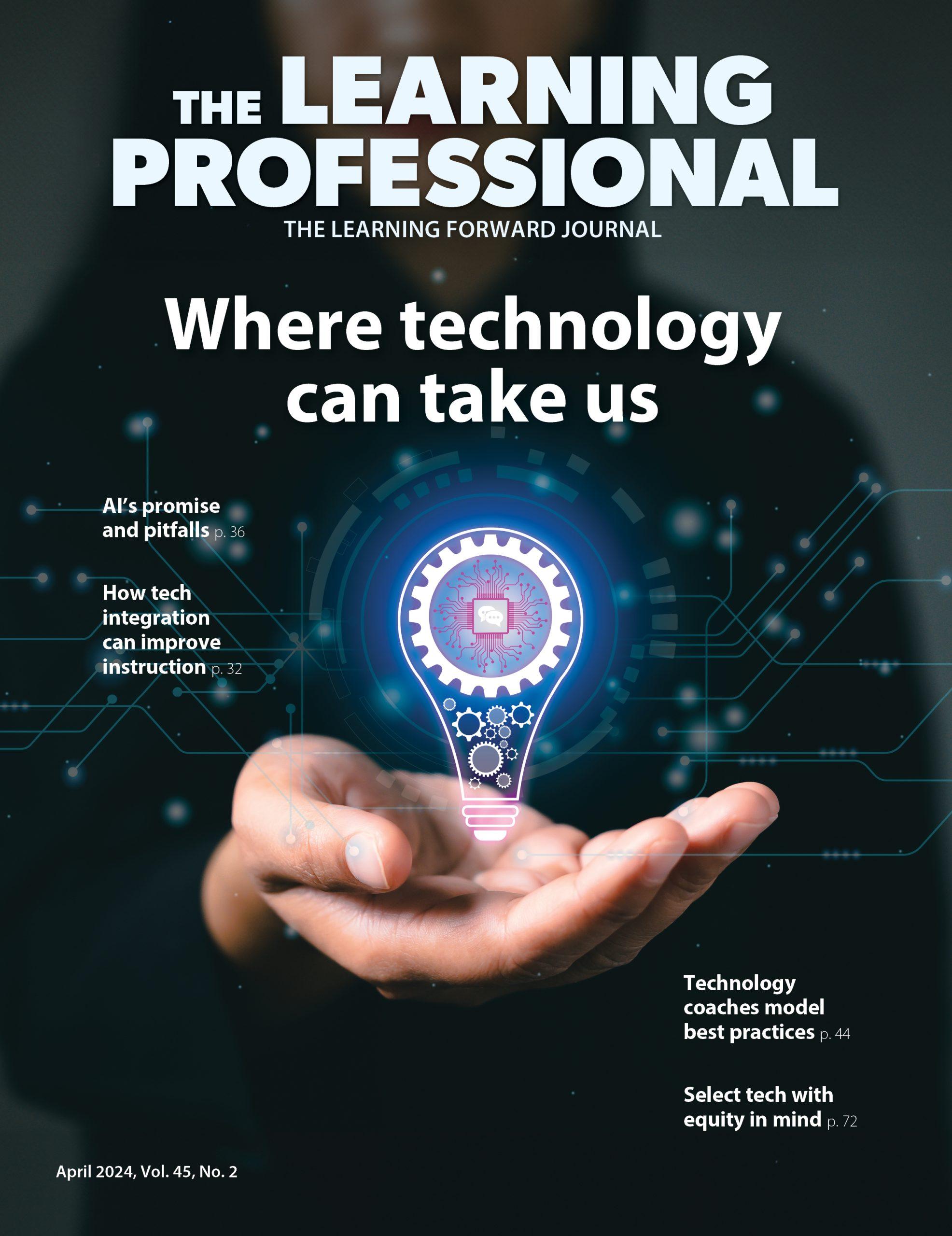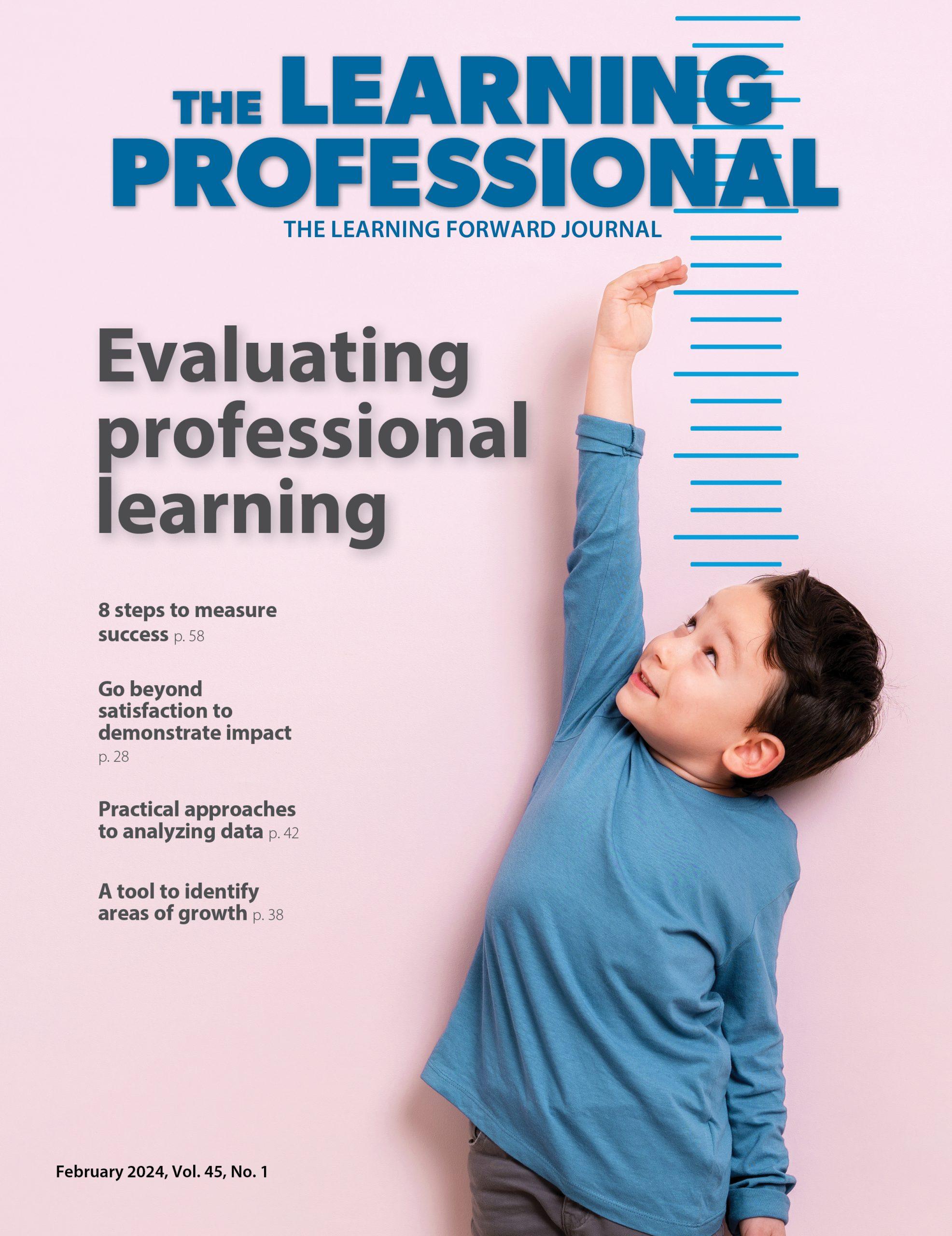New standards put the spotlight on professional learning.
By Hayes Mizell, Shirley Hord, Joellen Killion, and Stephanie Hirsh
Learning Forward introduces new Standards for Professional Learning outlining the characteristics of professional learning that lead to effective teaching practices, supportive leadership, and improved student results. A focus on learning ensures that learning for educators leads to learning for students.
Quick reference guide to Standards for Professional Learning.
This special pullout feature provides an at-a-glance view of the Standards for Professional Learning, the prerequisites for effective professional learning, the relationship between professional learning and student results, and suggestions for how to use the standards.
Learning Communities: The starting point for professional learning is in schools and classrooms.
By Ann Lieberman and Lynne Miller
Learning communities encourage and support members to examine their practice, try out new ideas, and reflect together on what works and why. As educators identify and solve problems of practice together, they build the capacity and collective will to enhance the learning and achievement of all students.
Practitioner viewpoint: John Wiedrick, Valleyview, Alberta, Canada.
Leadership: Support and structures make the difference for educators and students.
By Kyla L. Wahlstrom and Jennifer York-Barr
When leaders attend to the context in which others around them learn, they strive to put in place structures and supports that are likely to be effective. This is true whether the leadership comes from the district level, or from a principal working with teachers in her school, or a teacher leading among his peers or with his students.
Practitioner viewpoint: Deborah Jackson, McLean, Va.
Resources: The dollars and sense of comprehensive professional learning.
By Allan Odden
Collaborative teacher work using student data to hone instructional practices is the cornerstone for improving instructional effectiveness. So how much would effective professional learning cost? On average, $590 per pupil, according to the author, who outlines a cost structure for professional learning that itemizes each element and how its cost is calculated.
Practitioner viewpoint: Barbara Nakaoka, City of Industry, Calif.
Data:Meaningful analysis can rescue schools from drowning in data.
By Douglas B. Reeves and Tony Flach
In many schools, the availability of data is inversely proportional to meaningful analysis. The authors call on school leaders and policymakers to close the implementation gap, switch from an evaluation system to a learning system, and allocate more resources to data analysis and decision making.
Practitioner viewpoint: Denise Torma, Emmaus, Pa.
Learning Designs: Study, learn, design. Repeat as necessary.
By Bruce R. Joyce and Emily F. Calhoun
Professional development designers move through three phases to create high-quality learning designs best suited to their schools and school districts: 1) Study the learning capacity of educators and students; 2) study how teachers learn; and 3) apply what the designers learned in order to create alternative models of professional development.
Practitioner viewpoint: Shirnetha Stinson, Lancaster, S.C.
Implementation: Learning builds the bridge between research and practice.
By Gene E. Hall and Shirley M. Hord
Once new practices that promote quality teaching and successful student learning have been identified, educators must learn what they are, how to use them and how to transfer them into classroom practice. The Concerns-Based Adoption Model provides a bridge between research and practice.
Practitioner viewpoint: Raymond Aguilera and Olivia Zepeda, San Luis, Ariz.
Cultural proficiency: Effective diversity facilitation matches teachers’ level of cultural knowledge with the appropriate learning experience.
By Patricia L. Guerra and Sarah W. Nelson
Knowing teachers’ levels of cultural awareness helps professional developers design effective learning experiences.
Collaborative culture: If we open our minds, we can close the generation gap in the workplace.
By Susan Scott and Deli Moussavi-Bock
Generational differences offer an opportunity to explore a wide range of perspectives.
From the director:
Districts can take a powerful first step by adopting the new Standards for Professional Learning. Strengthen teaching and learning by moving Learning Forward’s new standards into policy and practice.
By Stephanie Hirsh
Learning Forward is the only professional association devoted exclusively to those who work in educator professional development. We help our members plan, implement, and measure high-quality professional learning so they can achieve success with their systems, schools, and students.
Categories: Uncategorized
Recent Issues
LEARNING TO PIVOT
August 2024
Sometimes new information and situations call for major change. This issue...
GLOBAL PERSPECTIVES
June 2024
What does professional learning look like around the world? This issue...
WHERE TECHNOLOGY CAN TAKE US
April 2024
Technology is both a topic and a tool for professional learning. This...
EVALUATING PROFESSIONAL LEARNING
February 2024
How do you know your professional learning is working? This issue digs...








